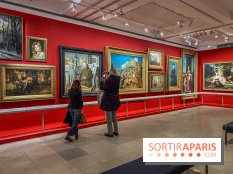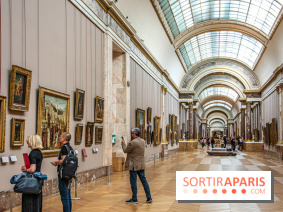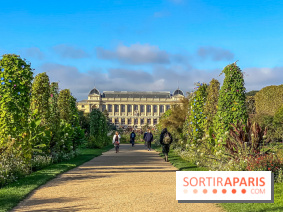The Philharmonie's Music Museum is convinced that music is omnipresent in the fine arts. In numerous exhibitions, it shows the influence of music in the works of major painters and visual artists. From September 22, 2020 to January 3, 2021, the work of Pablo Picasso will be examined, even though the painter declared that he "didn't like" music.
With the support of the Musée Picasso Paris, the museum unveils "Les musiques de Picasso", a beautiful exhibition featuring over 250 works from public and private collections.
Paintings, sculptures, tableaux-reliefs, ceramics, drawings and papier collés by the Spanish genius are divided into 9 sections. They are accompanied by period photographs, films and, above all, stage costumes andmusical instruments - some twenty in all - that would have belonged to Pablo Picasso when he couldn't play. All these objects have been brought together to show the extent to which music influenced Picasso's work.
How did music influence Picasso's work? Even if the artist couldn't play, he was immersed in a musical culture. Spain, with its bullfights and flamenco, then the Parisian cafés and ballets he frequented. He was friends with Francis Poulenc, Satie, Stravinsky, Falla and Milhaud. At the request of Josep Oller, founder of the Paris Olympia and owner of the Moulin-Rouge, he painted the portrait of singer Yvette Guilbert in 1901.
The exhibition is full of treasures. Ballet scenes, still lifes, portraits, collages and photos of his life. The masterpiece to be discovered is Pan's Flute, a 205×174 cm painting created in 1923, a sort of farewell to antique reverie, which serves as the visual for the exhibition poster.
One section of the exhibition focuses on the analysis of instruments for their volume, design and the notions of emptiness and fullness they evoke. Whether mandolin, banjo, violin, guitar, flute, clarinet, bala or tenora xylophone, Pablo Picasso was particularly interested in stringed instruments. In 1915, he even went so far as to deconstruct them in a series of little-known Cubist works presented here in an entire section.
Location
Philharmonie de Paris
221 Avenue Jean Jaurès
75019 Paris 19
Access
Metro line 5 "Porte de Pantin" station
Prices
Tarif réduit: €9
Tarif plein: €12
Official website
philharmoniedeparis.fr
More information
Opening hours: 11 a.m.-6 p.m. Tuesday-Thursday, 11 a.m.-8 p.m. Friday-Sunday















